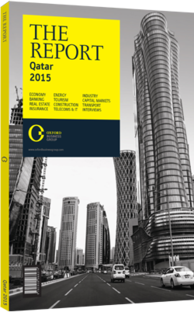Qatar's commitment to renewables includes connecting solar power to railways
Under the aegis of Qatar National Vision 2030 (QNV 2030), the government has pledged to generate 2% of energy needs via renewable sources by 2020, with innovation and proposed projects extending all the way to the expansive Qatar Rail Development Programme (QDRP), a multibillion-dollar effort comprising construction of a light rail transit (LRT) system in Lusail City, the Doha Metro, and a long-distance passenger and freight railway network, connected to the wider GCC railway via Saudi Arabia and Bahrain.
In 2014 the government moved ahead with establishing a unique solar energy programme, to be integrated into the QRDP, with the potential to generate enough renewable energy to fuel a small power plant.
QATAR SOLAR TECHNOLOGIES: Qatar Solar Technologies (QST ec), a joint venture between Qatar Solar, a subsidiary of Qatar Foundation for Education, Science and Community Development’s solar investment company, SolarWorld AG, and the Qatar Development Bank, was established to manufacture materials needed for a viable solar energy programme. The company has also worked with Qatar Electricity and Water Company to build an 8000-tonne-per-annum (tpa) polysilicon plant in Ras Laffan Industrial City, under a $1.1bn deal announced in May 2012.
The facility is the state’s first solar-grade polysilicon facility. According to reports from the company, its first silicon products, produced by the factory’s two polysilicon trains, were made available in December 2014. Polysilicon is a critical ingredient in photovoltaic (PV) panels, which convert sunlight directly into electricity, and a readily available domestic supply bodes well for Qatar’s future renewable energy plans.
With a total area of 1.2m sq metres at its Ras Laffan site, enabling long-term production to expand to 45,000 tpa, the company reports its factory will eventually be able to integrate downstream facilities into its production line, manufacturing solar ingots, wafers, cells and modules, and producing 6.5 GW of solar modules, or enough solar energy to power a large city.
QST ec is now building a 150-MW solar module facility and 1.4-MW solar farm at its Ras Laffan site, with both due to start operations in 2015. One of the first projects slated to benefit from new supply of its solar technology will be the multibillion-dollar QRDP.
SOLAR RAILWAYS: In July 2014 QST ec signed a memorandum of understanding (MoU) with the Qatar Railways Company (Qatar Rail), to explore installing solar panels on the state’s rail network. Up to 80 MW of power could be generated if fully implemented, according to QST ec authorities, with the first stage of the agreement expected to study the feasibility of installing ground and roof-mounted PV panels on the proposed 3m-sq-metre rail depot facility, to be constructed near the new airport.
“This is a long-term agreement that demonstrates the very essence of QNV 2030, and we look forward to working closely with Qatar Rail to develop sustainable solar energy solutions,” Khalid Al Hajri, chairman and CEO of QST ec, told local press. The MoU came after a lengthy feasibility study, with development of a solar project a key part of Qatar’s efforts to build one of the most energy-efficient railways. The ultimate goal is a four-star rating on the Global Sustainability Assessment System (GSAS.) GSAS consists of six certification levels to measure a project’s environmental impact, lifespan and sustainability (see Construction chapter). A railway that obtains a cumulative final score below zero does not meet the baseline, and will be denied certification. Certification is achieved when the final score is greater than or equal to zero, with GSAS rail projects receiving a rating of between one and six stars. Criteria include wastewater load, energy delivery performance, water consumption, materials, support of the national economy and solid waste management.
No timeline has been specified for the solar rail project, and officials did not say whether a working system would be installed prior to Lusail LRT’s launch in 2018, or the Doha Metro’s soft launch in 2019.
You have reached the limit of premium articles you can view for free.
Choose from the options below to purchase print or digital editions of our Reports. You can also purchase a website subscription giving you unlimited access to all of our Reports online for 12 months.
If you have already purchased this Report or have a website subscription, please login to continue.

